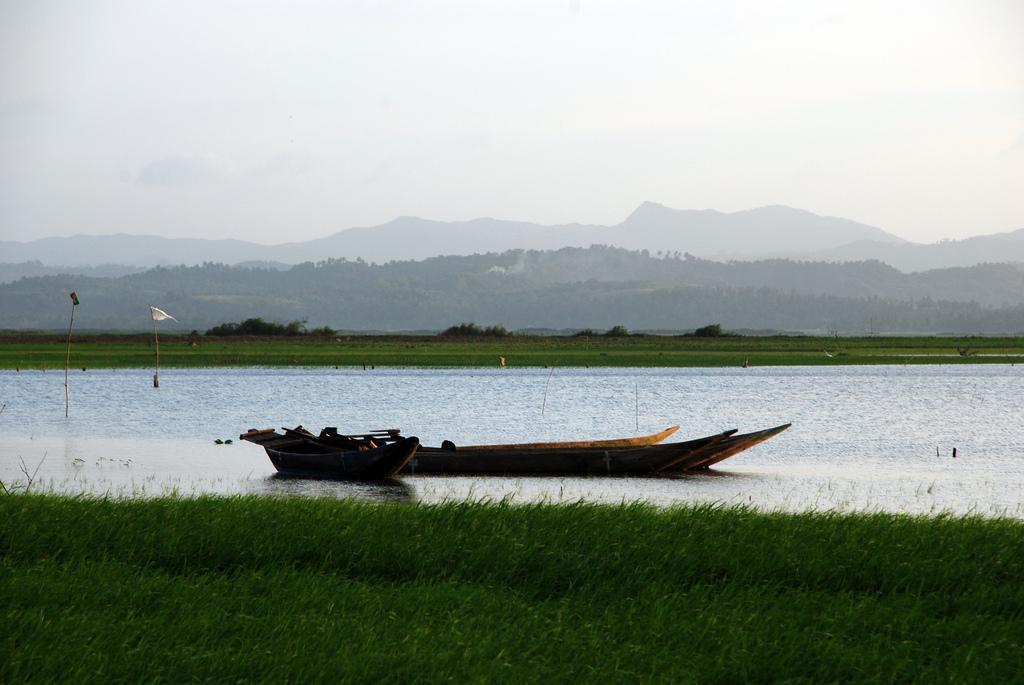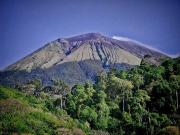
Scattered throughout the province of Camarines Sur are lakes that teem with life and the bounty of nature, and Lake Bato is one of them. exemplifying the many varied blessing nature can bestow us.
Lake Bato is a freshwater and inland lake which is a selected habitation of wild ducks and a choice site for bird watching. The lake is the seventh largest in the country. It has extensive marshes and swamp forests. The lake drains into a tributary of the Bicol River which enters the sea near Naga City. Lake Bato is part of the Rinconada (Bicol) Lakes System, which also includes Lake Buhi and Lake Baao-Bula. It has an average depth of 8 meters and its bottom is muddy clay.
The History of the Lake
The lake was originally called "Caligno" by natives living around the area and a small settlement was founded on its shores during pre-Spanish times; the early settlers thrived on the lake's rich resources and use it as a primary medium of travel. The settlement flourished on to become the present-day town of Bato, Camarines Sur and the lake came to be named after the town, which was established by a decree of the Superior Government (National Government) on February 15, 1758, when the country was still under the Viceroyalty of New Spain.
Flora and Fauna
This freshwater lake is endowed with diverse flora and fauna. There are approximately 20 species of larger aquatic plants that have been identified in the lake. These floral species include water spinach (Ipomea reptans), hydrilla (Hydrilla verticillata), and water hyacinth (Eichornia crassipes). The lake is known for the Sinarapan (Mistichthys luzonensis), the world's smallest commercially-harvested fish in the world. "Sinarapan" literally means "caught by sarap" in Buhi in this early historical context. However, the same fish is called "tabios" in Bato, Nabua, Baao and Bula, Camarines Sur. The etymology of "tabios", however, is quite vague. The name is not found in the scientific literature unlike "Sinarapan". It is believed that "Tabios" is only used in the vernacular pertaining to the local fishery. At present, the Sinarapan is threatened by extinction due to overfishing and other factors but efforts to conserve it are ongoing. Such is this specie's importance to the lake's ecosystem since it is endemic only to this region. Other economically important faunal species found in Lake Bato are tilapia (Tilapia nilotica and T. mossambica), carp (Cyprinus carpio), freshwater shrimp (Macrobachium sp.), catfish (Clarias sp.), and climbing perch (Anabas testudineus).
Location
Lake Bato is located in the town of Bato, approximately nine kilometers southwest of Iriga City, Camarines Sur Province.
How to get there
By Air
The province of Camarines Sur can be reached by plane within 45 minutes. Flights are serviced by the Air Philippines (Pal Express), Zest Air and Cebu Pacific from Manila to Naga City Airport.
From Naga City, take a bus, van or jeepney going to the city of Iriga.
By Land
Air-conditioned and non-air-conditioned buses like PhilTranco, Isarog Bus Co. and Peñafrancia Bus Lines ply daily through the Quirino Highway from Manila to Naga or directly going to Iriga city.
Going around the town and the province
Buses, vans and jeepneys are mostly used for traveling outside the city of Naga going to the different towns of Camarines Sur For other municipalities, jeepneys, tricycles and trisikad (manpowered tricycles) are the main form of transportation.
- http://www.wowbicol.com/tourist_attractions/camsur/tourist_01.htm
- http://wikitravel.org/en/Camrines_Sur
- http://www.visitmyphilippines.com/index.php?title=CamarinesSur&func=all&pid=1695&tbl=0
- http://en.wikipedia.org/wiki/Lake_Bato
- http://en.wikipilipinas.org/index.php?title=Lake_Bato
- http://wikitravel.org/en/Iriga










